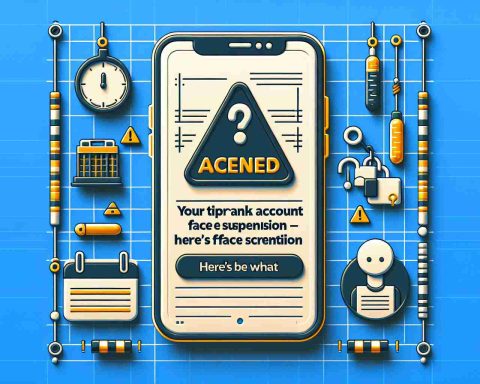- Tether is focusing on integrating USDT across multiple blockchain networks, prioritizing collaboration over competition.
- This strategy enhances transaction versatility and accessibility, positioning USDT as a universal stablecoin.
- The goal is to achieve interoperability, addressing the fragmentation that hampers digital currency adoption.
- Users can anticipate faster and more efficient transactions, increasing trust in the cryptocurrency market.
- Tether’s approach may set a precedent for future digital asset development, promoting a more interconnected financial landscape.
In a bold move that signals the future of cryptocurrency, Paolo Ardoino highlights Tether’s commitment to collaboration over competition. Rather than pouring resources into developing a new blockchain, Tether is doubling down on integrating its flagship digital dollar, USDT, across multiple networks.
Imagine a world where seamless transactions flow effortlessly through various blockchain platforms. Tether’s strategy emphasizes versatility and accessibility, making USDT a universal stablecoin for all users. This approach not only enhances Tether’s connectivity but also offers users the freedom to transact without being tethered to a single blockchain ecosystem.
The driving force behind this shift is clear: Ardoino envisions a cryptocurrency landscape where interoperability reigns supreme. By focusing on multi-network integration, Tether aims to solve the fragmentation issue that often stalls broader adoption of digital currencies. Users can expect faster, more efficient transactions with minimal hassle, paving the way for increased trust and expansion in the crypto market.
In this evolving digital age, Tether is setting the standard for stability and accessibility in cryptocurrency. The key takeaway here? Embracing collaboration over competition may very well be the blueprint for the next generation of digital assets. As Tether leads the charge, others in the crypto space may follow, steering us toward a more interconnected financial future.
Stay tuned as Tether continues to redefine the way we think about stablecoins and transaction networks!
Unlocking the Future of Cryptocurrency: Tether’s Game-Changing Strategy!
Tether’s Commitment to Multi-Network Integration
In a groundbreaking development within the cryptocurrency sector, Tether is set to reshape the landscape of digital finance through its robust strategy centered on multi-network integration. While its flagship digital dollar, USDT, gains traction, the focus is squarely on creating an interconnected blockchain ecosystem. This strategic pivot not only promotes versatility among users but also aims to enhance transaction efficiency across various platforms.
Key Features of Tether’s Strategy:
– Interoperability: Tether seeks to break down barriers between different blockchain networks, allowing for seamless transactions that eliminate the fragmentation traditionally seen in the crypto space.
– Universal Stablecoin: USDT aspires to be recognized as the universal stablecoin, ensuring that users can transact freely without constraints tied to individual blockchain ecosystems.
– Faster Transactions: By improving integration among networks, Tether aims to offer rapid transactions, thus encouraging broader adoption and trust in digital currencies.
– Collaboration over Competition: In a notable shift, Tether prioritizes collaborative efforts with other platforms, hinting that a unified approach may be more beneficial than a fiercely competitive one.
Pros and Cons of Tether’s Integration Strategy
Pros:
1. Increased Accessibility: Users can transact without being limited to one network, fostering a more inclusive crypto environment.
2. Enhanced Trust: Streamlined transactions could lead to greater user confidence in using digital currencies.
3. Broader Adoption: By addressing fragmentation, more individuals and businesses may be encouraged to adopt cryptocurrencies.
Cons:
1. Security Challenges: Increased interoperability may introduce vulnerabilities, as more networks become interconnected.
2. Regulatory Scrutiny: Governments may impose regulations that affect Tether’s operations across multiple jurisdictions.
3. Platform Dependency: Users might become dependent on the stability of Tether and its partnerships with various networks.
Market Forecast: What Lies Ahead for Tether and USDT?
The shift towards a multi-network integration strategy could position Tether as a leader in the stablecoin market within the next few years. Analysts predict that with enhanced interoperability, USDT could see significantly expanded use in everyday transactions, potentially increasing its market share and influence in the realm of digital currencies.
Questions You Might Have
1. What exactly is multi-network integration in the context of cryptocurrencies?
Multi-network integration refers to the ability to conduct transactions across different blockchain platforms without requiring a user to convert assets between networks. This creates a more fluid and interconnected financial environment.
2. How does Tether’s strategy impact the future of stablecoins?
Tether’s approach may set a precedent for other stablecoin issuers. If successful, it could lead to a wave of similar strategies across the industry, promoting greater use of stablecoins in various transactions.
3. What are potential risks associated with Tether’s integration strategy?
Depending on multiple networks could pose risks such as security vulnerabilities, regulatory challenges, and potential instability if the partnerships don’t hold or if a network suffers from technical issues.
For more insights and information on Tether and USDT, check out Tether’s official website.









